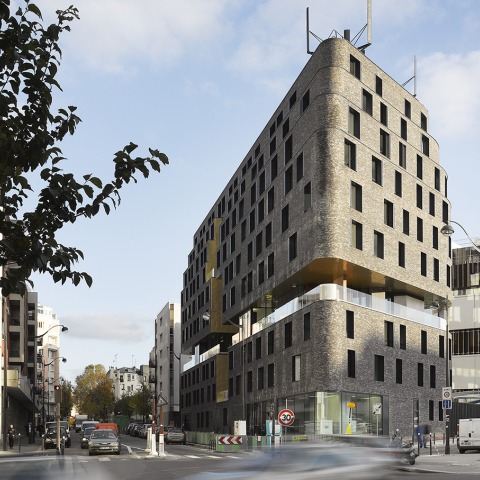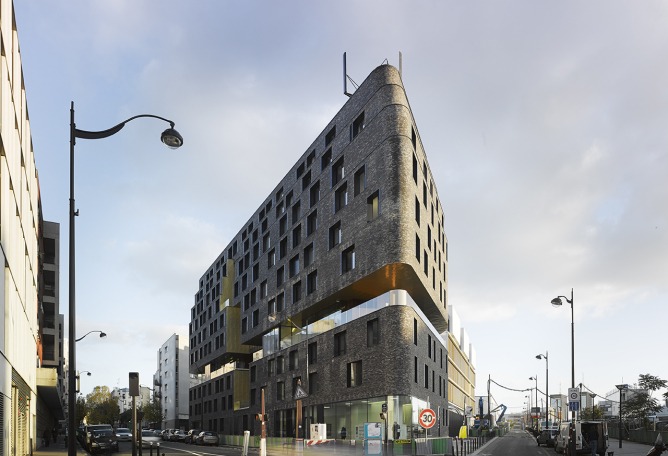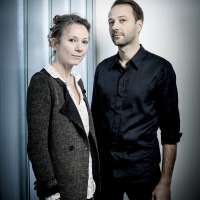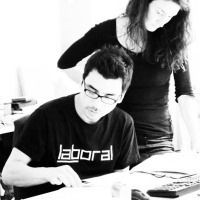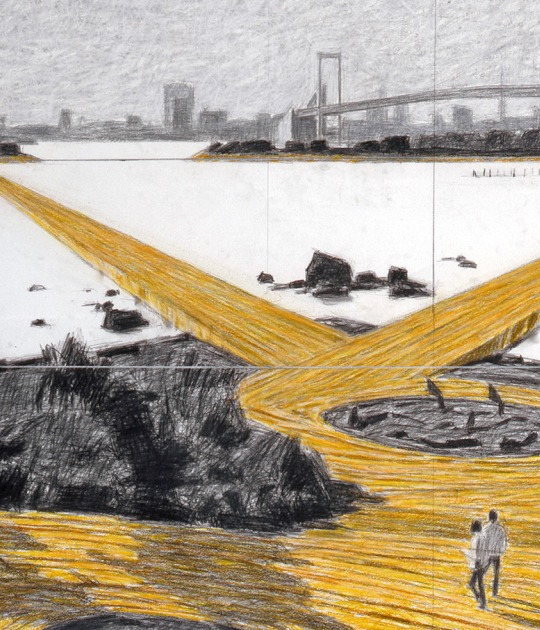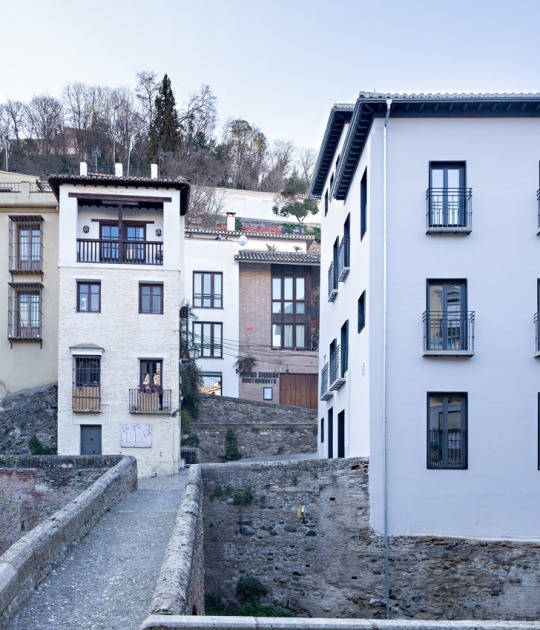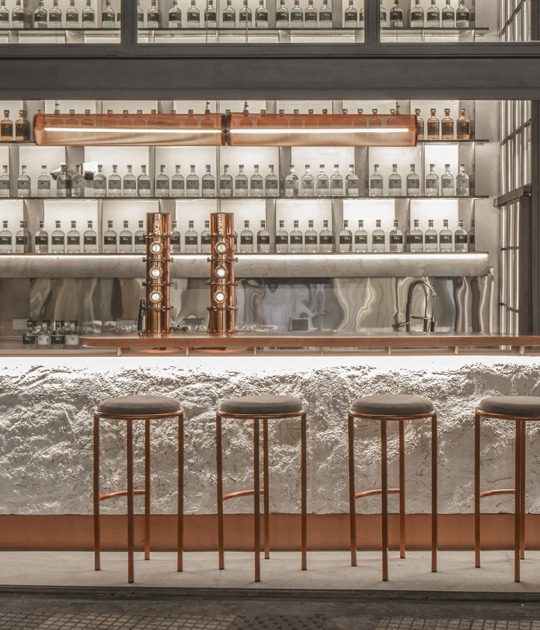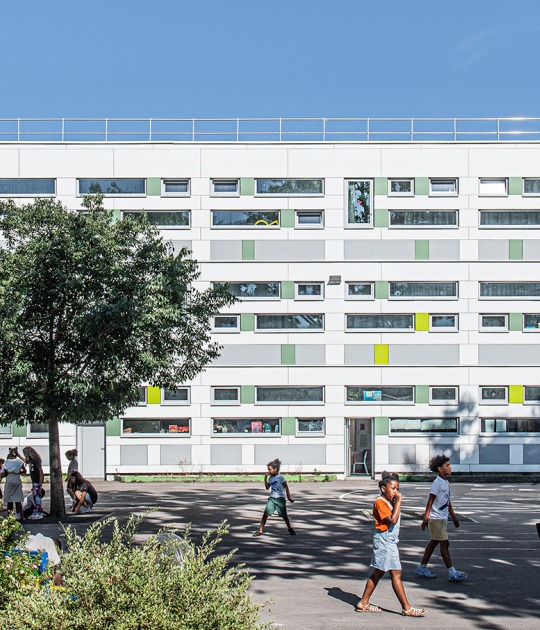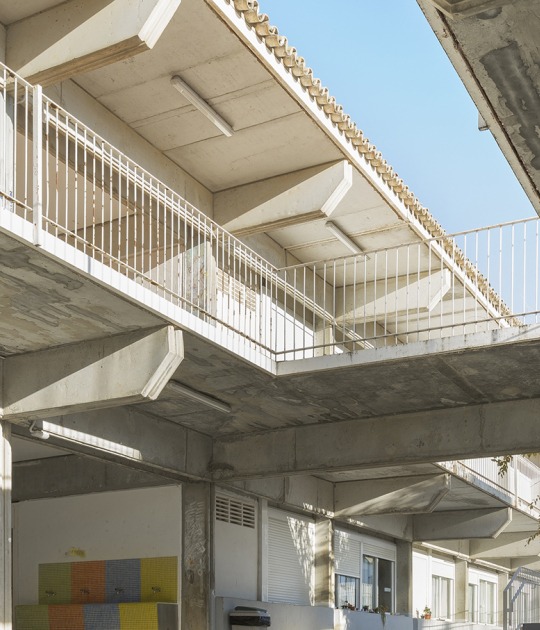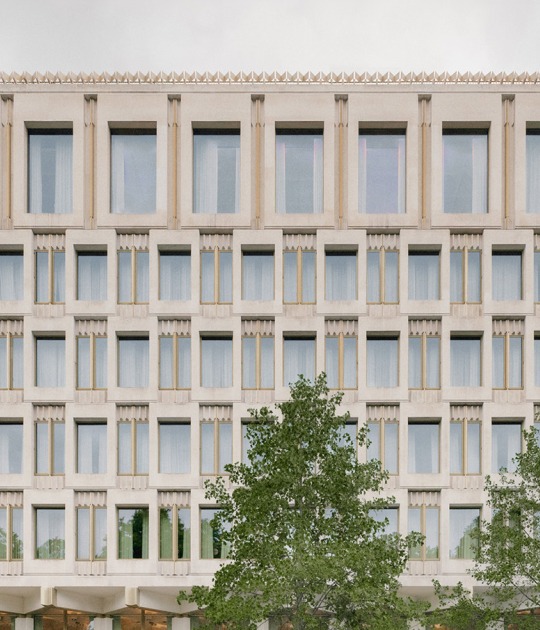Project description by Avenir Cornejo Architects
This very compact project hosts several programs transforming the building into a real little machine for living. This density assumed by extremely rational plans (development and distribution studios) has two aspects, acting as the urban level from a point of view of applications. The first is horizontal, formed by an open 3rd floor, it gathers all common facilities (library, gym, communal kitchen…) arranged freely on the tray looking out over the city.
The second breath is a vertical fault that brings natural light into all circulations, horizontal (and vertical). In this regard, we encourage the use of public spaces (including stairs) which are viewed as places for sharing nice and bright. From the urban point of view, this work is to synchronise the building with a topographically changing context: the device, its coverage, the steepness of the area, the terrace of the art cinema and testing... All these levels present in the Porte des Lilas are many references with which the new project dialogue through its own system of “urban balconies” is playing new strata of the city.
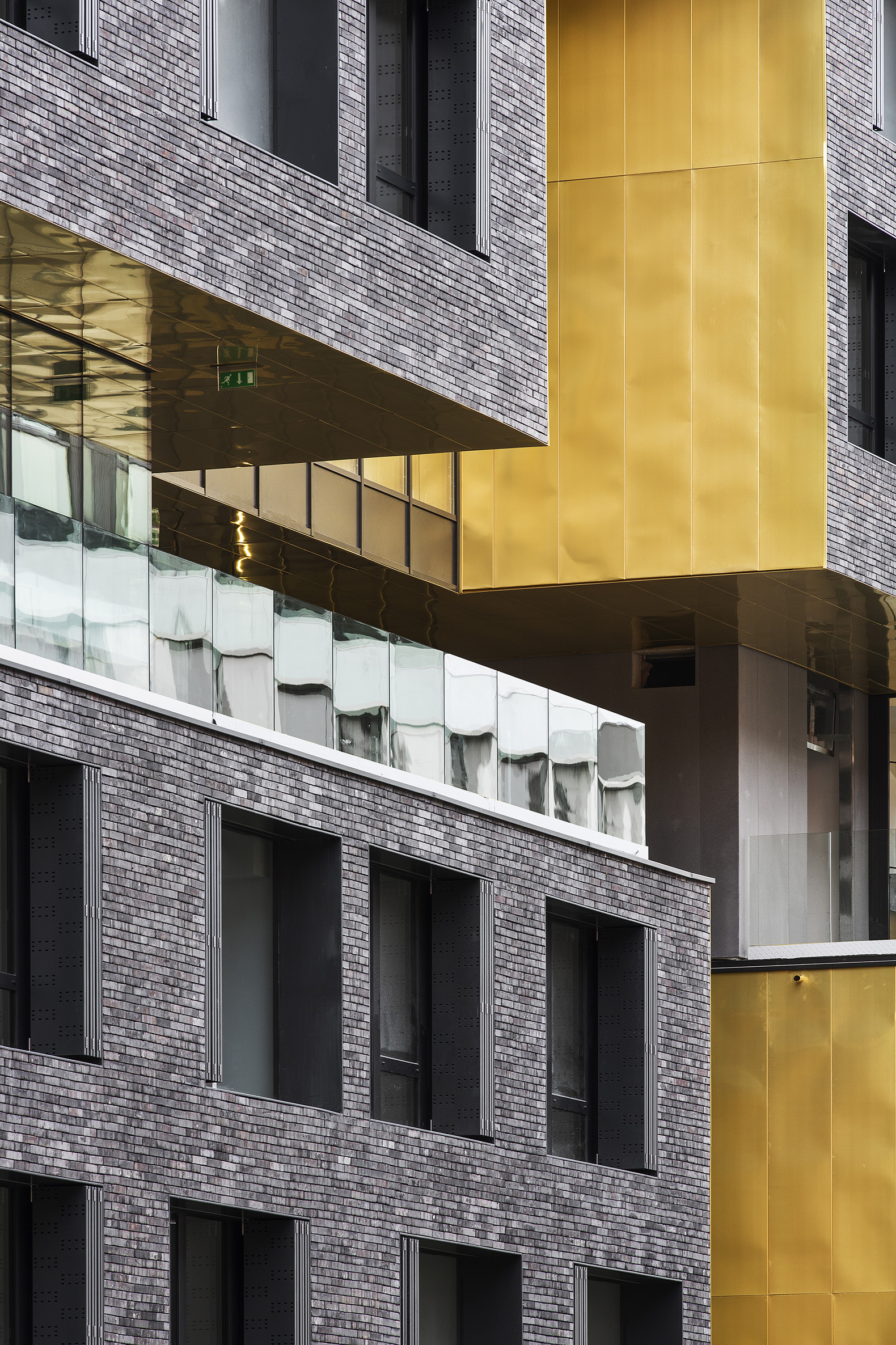
Exterior view. Day-Care and Young Workers Hostel, by Chartier Dalix and Avenier Cornejo. Photography by David Foessel.
Context
The new RIVP (Paris public housing agency) building houses three services: a hostel for immigrants, a hostel for young workers, a 66-place day-care on the ground floor, as well as communal facilities. Located in Paris’ 20th arrondissement, just beyond the beltway, it is both Parisian and Lilasian. The building’s almost unique location in Paris makes it a concrete symbol of the reconnection between the two areas.
The building is part of an area undergoing immense change: the beltway, which is partially covered and lies just to the west, the site's sloping topography, the art-house cinema and experimental platform. The building plays with all of these elements, using them as new reference points.
Services and architecture
The structure’s homogeneity is a reply to the building’s symbolic nature; it is visible from the area’s new public spaces. The high density of the services offered translates into very carefully planned housing, and is offset by two breaks, which divide the building both horizontally and vertically, and increase the value of the compact spaces:
• The third floor is open, and has a view of Paris. This is a common space for residents, where they can access all the community services provided.
• A vertical rift, which is a source of light for the circulation and faces the street, offering a visual link between hostel life and the area around it
The hostel
The hostel’s common amenities (media centre, sports hall, group kitchen, etc.) are all located on one level (third floor). This area offers the two hostels’ residents the possibility to “live together.” It allows them to get to know each other as they participate in different activities. The goal of mixing diverse groups has real meaning here. It brings the client’s main ambition of bringing different hostels together under one roof to life.
Complementing the horizontal break, the vertical rift hollows out the building (on Rue du Docteur Gley), channelling natural light into the circulation and the urban space, creating areas for people to come together and relax on each floor. It also creates a break in the rhythm of the 30 flat per floor distribution.
The day-care
Located entirely on the ground floor, it faces south. The rooms enjoy generous light and extend to the outside play areas. An aerial canopy made from a light metallic mesh covers the play areas, giving a sense of protection without blocking any light. A combination of delicate and rustic plants borders the playground.
The flats
Within the hostel, the flat “type” is designed to make maximum use of the space available and to provide a flexible living area. The architect-designed furniture has been custom-made. Shutters mean the kitchenette can be closed off, and the table contains built-in drawers. There are two sleeping options: either a pull-out bed or a trundle bed. A bench and wardrobe are also designed to maximise space and comfort, while the bathrooms are naturally lit using a light well.
Façades and building materials
The entire building is covered with a homogeneous skin. Referencing the buildings around the outskirts of Paris (low-cost housing), the choice of authentic materials links with a characteristic era of RIVP construction. The building is faced in brick, which is long-lasting and easy to maintain. The bricks have been placed using a square-edged joint cut and are handmade. This semi-industrial manufacturing method gives the brick infinite shades in its anthracite tones. To bring out the sensual pleasure of this material, the two caesuras are dressed in copper. The luminosity and reflective quality of this material contrast with the velvety texture of the dark brick. The building’s rounded edges are dressed in brick, and the successive setback of floors 7, 8, and 9 from the building’s base frees up space for some small terraces in varnished aluminium. The building’s compactness has allowed for mostly 2x2 m windows for each studio, which are on average 18m²
Energy
Two wind turbines are installed on the roof. They supply the day-care during the day and the hostel at night. This choice of energy supply, still in its infancy in an urban setting, is particularly justified here. The building is located in an elevated position and is in a wind corridor. Solar panels located on the roof meet 30% of the building’s energy needs.
